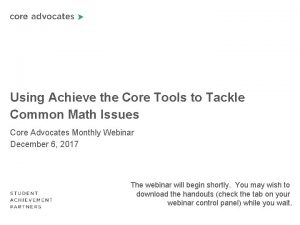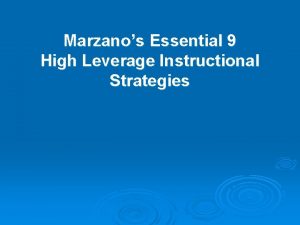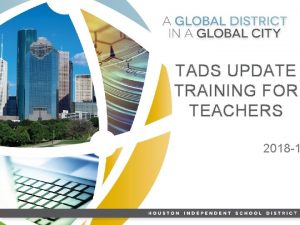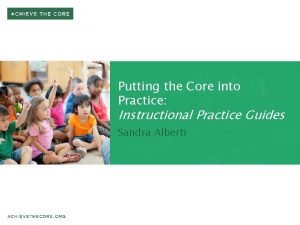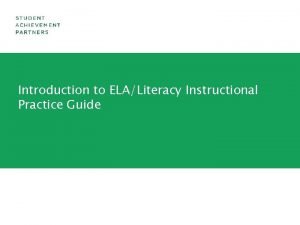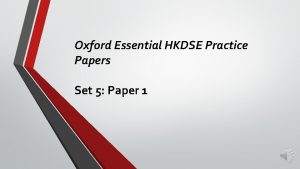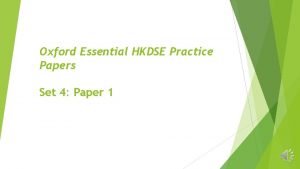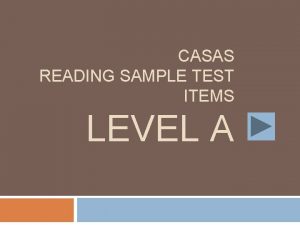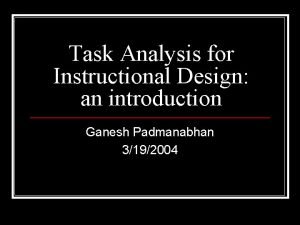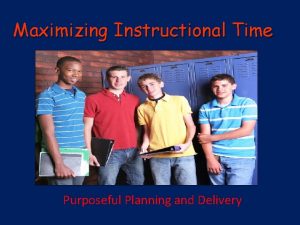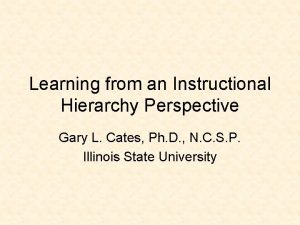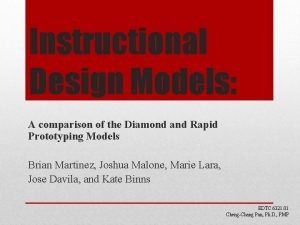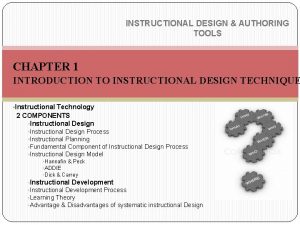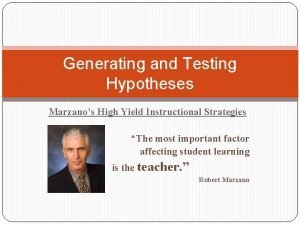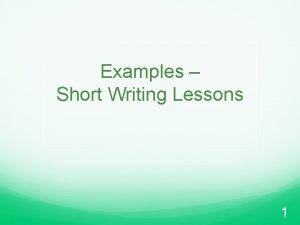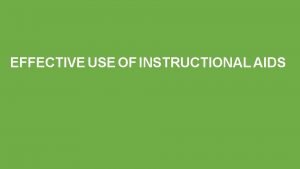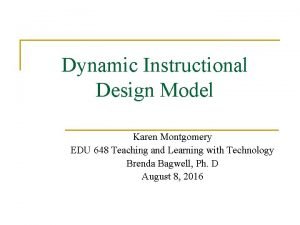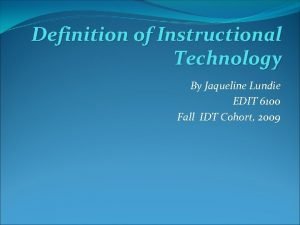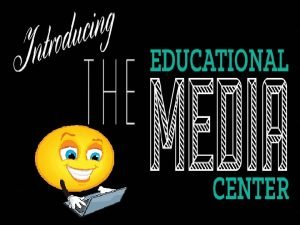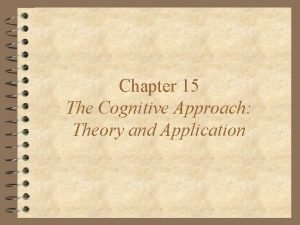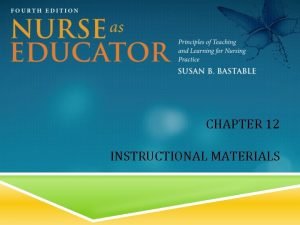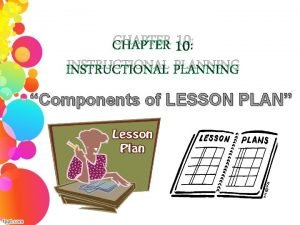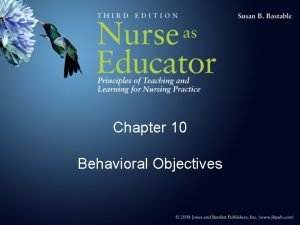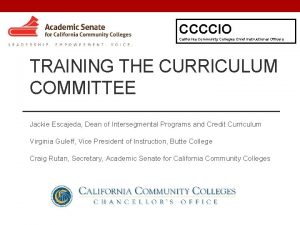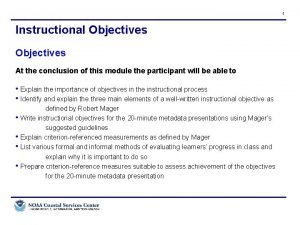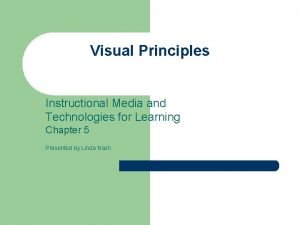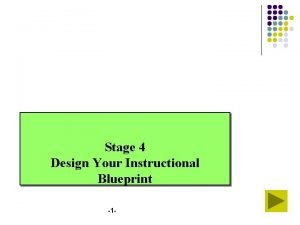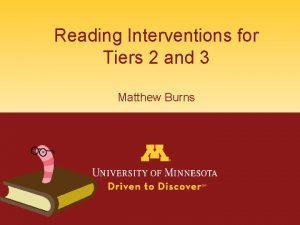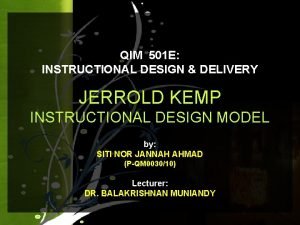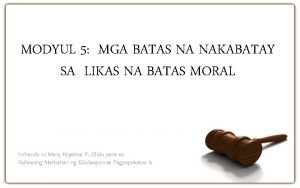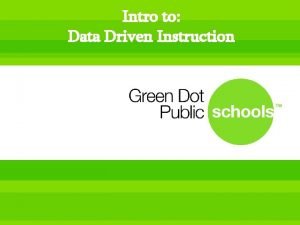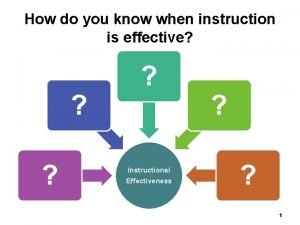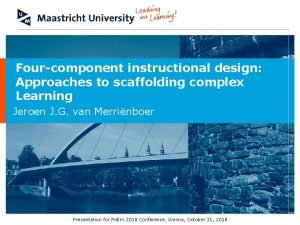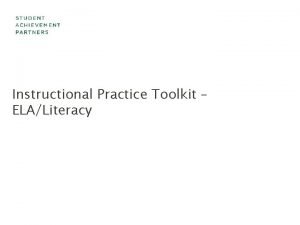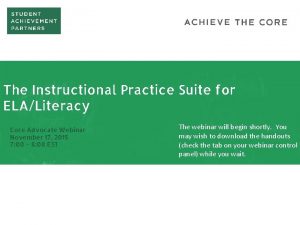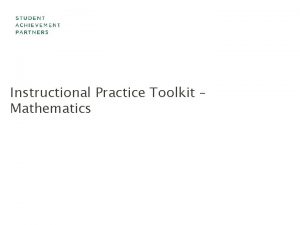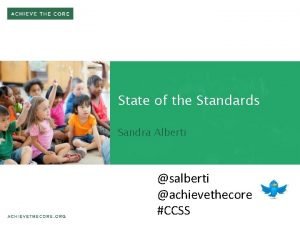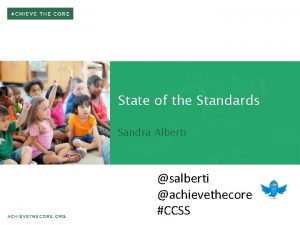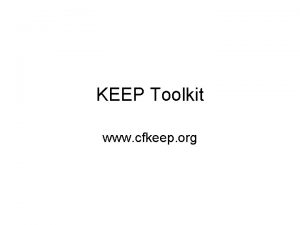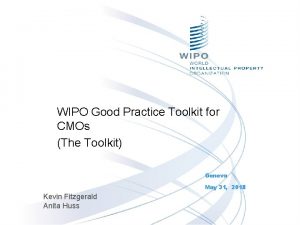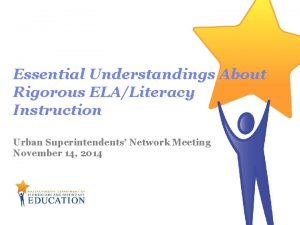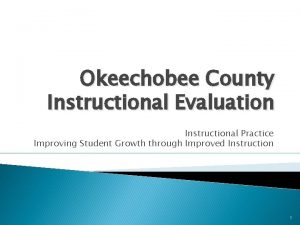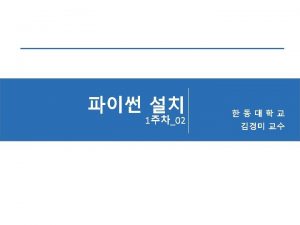Instructional Practice Toolkit ELALiteracy www achievethecore org Essential













































- Slides: 45

Instructional Practice Toolkit – ELA/Literacy www. achievethecore. org

Essential Question What do the standards and Shifts look like in the classroom? PAGE 2

Learning Goals • Examine and discuss evidence of standards-aligned practice using content-specific tools and resources including Instructional Practice Guide (IPG) and Beyond the Lesson Discussion Guide. • Engage with authentic lesson content and discuss the related Shifts and specific standards required (e. g. , read the text). • Observe lesson video and gather evidence of teacher and student actions that exemplify standards-aligned instruction. • Analyze and interpret lesson plans and student work to collect and discuss evidence of standards-aligned practice. • Summarize overall trends of standards-aligned practice and discuss implications and next steps based on a variety of specific roles and contexts. PAGE 3

The Teaching and Learning Cycle Source: Cherry Creek School District, Colorado PAGE 4

The Instructional Practice Toolkit (IPT) Components PAGE 5

Norms • Be brave! We’re all learning. • Frame all observations using the language of the tools and the standards. • Support every idea with evidence. PAGE 6

Module Overview PAGE 7

Goals and Activities in this Component Examine and discuss standards-aligned practice using the Instructional Practice Guide and Beyond the Lesson Discussion Guide. PAGE 8

Key Shifts in ELA/Literacy Complexity: Practice regularly with complex text and its academic language. Evidence: Ground reading, writing, and speaking in evidence from text, both literary and informational. Knowledge: Build knowledge through contentrich nonfiction. PAGE 9

Instructional Practice Guide - Design • Core Actions Key Practices (numbered sections) • Indicators Observable (lettered details under each Core Action) Space for evidence PAGE 10

Beyond the Lesson: Discussion Guide PAGE 11

The Shifts, Core Actions, and Beyond the Lesson • Read/scan the IPG and Beyond the Lesson Discussion Guide • What is the purpose of the Instructional Practice Guide and Beyond the Lesson Discussion Guide? • Consider the Shifts throughout both documents. Which Shift does each Core Action, Indicator, or question reflect? Highlight or underline where you see evidence of the Shifts throughout the tools. PAGE 12

Reflection Based on your role in the learning community, how do content-specific tools support your work? Based on your role in the learning community, what resources and strategies could be used to incorporate content-specific tools in your work? PAGE 13

Module Overview PAGE 14

Goals and Activities in this Component • Engage with authentic lesson content and discuss the related Shifts and specific standards required (e. g. , read the text). • Zoom into IPG: Core Action 1 • Analyze Text Complexity • Familiarize yourself with the text and conducting qualitative analysis. PAGE 15

Core Action 1 - Reading/Listening Comprehension Focus each lesson on a high-quality text (or multiple texts). Indicators: A. A majority of the lesson is spent listening to, reading, writing, or speaking about text(s). B. The anchor text(s) are at or above the complexity level expected for the grade and time in the school year. C. The text(s) exhibit exceptional craft and thought and/or provide meaningful information in the service of building knowledge; where appropriate, the texts are richly illustrated. PAGE 16

Three Factors of Text Complexity 1. Quantitative Scale: What a computer can “see” and measure 2. Qualitative Measures: Text features best judged by human evaluation (structure, language and knowledge demands, and purpose) 3. Professional Judgment: Consider the appropriateness of the text for student and task PAGE 17

Qualitative Measures PAGE 18

Qualitative Analysis • Read the text featured in the lesson. • Complete the “What Makes This Text Complex? ” sheet. • Use the information gathered about the text to provide evidence for indicators 1 B and 1 C from the IPG. PAGE 19

Reflection Based on your role in the learning community, how does analyzing the text at the center of the lesson help you to think about students engaging with this text? Based on your role in the learning community, what resources and strategies could be used to provide students with access to a range of complex texts? PAGE 20

Module Overview PAGE 21

Goals and Activities in this Component • Observe lesson video and gather evidence of teacher and student actions that exemplify standards-aligned instruction. • Dive into IPG: Core Actions 2 & 3 • Watch the lesson video • Complete the IPG Coaching Tool PAGE 22

Core Action 2 Employ questions and tasks, both oral and written, that are textspecific and accurately address the analytical thinking required by the grade-level standards. Indicators: A. Questions and tasks address the text by attending to its particular qualitative features: its meaning/purpose and/or language, structure(s), or knowledge demands. B. Questions and tasks require students to use evidence from the text to demonstrate understanding and to support their ideas about the text. These ideas are expressed through a variety of means (e. g. , drawing, writing, dramatic play, speaking). C. Questions and tasks attend to the words (academic vocabulary), phrases, and sentences within the text. D. Questions are sequenced to build knowledge by guiding students to delve deeper into text and graphics. PAGE 23

Core Action 2 Rating scale PAGE 24

Core Action 3 Provide all students with opportunities to engage in the work of the lesson. Indicators: A. The teacher poses questions and tasks for students to do the majority of the work: speaking/ listening, reading, and/or writing. Students do the majority of the work of the lesson. B. The teacher cultivates reasoning and meaning making by allowing students to productively struggle. Students persevere through difficulty. (continued on next slide) PAGE 25

Core Action 3 Provide all students with opportunities to engage in the work of the lesson. Indicators (continued): C. The teacher expects evidence and precision from students and probes students’ answers accordingly. Students provide text evidence to support their ideas and display precision in their oral and/or written responses. D. The teacher creates the conditions for student conversations where students are encouraged to talk about each other’s thinking. Students talk and ask questions about each other’s thinking, in order to clarify or improve their understanding. E. The teacher deliberately checks for understanding throughout the lesson and adapts the lesson according to student understanding. When appropriate, students refine written and/or oral responses. F. When appropriate, the teacher explicitly attends to strengthening students’ language and reading foundational skills. Students demonstrate use of language conventions and decoding skills, activating such strategies as needed to read, write, and speak with grade-level fluency and skill. PAGE 26

Core Action 3 Rating scale Teacher behavior Student behavior PAGE 27

Guidance: Taking Low-Inference Notes Source: We Teach NYC PAGE 28

Watch the Lesson Video 1. Take low-inference notes. What do you see and hear? 2. Keep in mind CA 1 A, CA 2, and CA 3, but don’t complete the Instructional Practice Guide yet. PAGE 29

After Watching the Lesson Video – Complete the Instructional Practice Guide • Spend time individually applying the low-inference notes you gathered from the lesson video to the indicators under each of the Core Actions. • Discuss the indicators and share the evidence with colleagues. PAGE 30

Beyond the Lesson Guide “After discussing the observed lesson, use the ‘Beyond the Lesson’ questions to help clearly delineate what practices are in place, what already occurred, and what opportunities might exist in another lesson, further in the unit, or over the course of the year to incorporate the Shifts into the classroom. ” • Review the questions from the Beyond the Lesson Discussion Guide. • Which questions would you prioritize for this lesson? Why? PAGE 31

Reflection Based on your role in the learning community, how did looking at the lesson through the lens of the IPG and Beyond the Lesson Discussion Guide help you to think about standards-aligned instruction in the classroom? Based on your role in the learning community, what resources and strategies could be used to support standards-aligned practice in classrooms? PAGE 32

Module Overview PAGE 33

Goals and Activities in this Component • Analyze and interpret the lesson plan to collect and discuss evidence of standards-aligned practice. • Review the guiding questions related to each Core Action in the Lesson Plan Analysis Tool. • Respond to the questions using evidence from the lesson plan provided. PAGE 34

Reflection Based on your role in the learning community, how did analyzing the lesson plan help you to think about the impact of curriculum resources on instructional practice? Based on your role in the learning community, what resources and strategies could be used provide all classroom access to standards-aligned curriculum resources? PAGE 35

Module Overview PAGE 36

Goals and Activities in this Component • Analyze and interpret student work to collect and discuss evidence of standards-aligned practice. • Review the guiding questions related to each Core Action in the Student Work Analysis. • Respond to the questions using evidence from the student work samples provided. PAGE 37

Reflection Based on your role in the learning community, how did analyzing the student work help you to think about student outcomes? Based on your role in the learning community, what resources and strategies could be used to encourage and support improved student outcomes? PAGE 38

Module Overview PAGE 39

Goals and Activities in this Component Summarize overall trends of standards-aligned practice and discuss implications and next steps based on a variety of specific roles and contexts. PAGE 40

Feedback Summary The Teaching and Learning Cycle Source: Cherry Creek School District, Colorado PAGE 41

Feedback Summary • Review the evidence collected from the: – Lesson Plan Analysis – Student Work Analysis – Instructional Practice Guide - Coaching Tool – Beyond the Lesson Discussion Guide • Use the feedback summary to highlight: – Evidence of the Shifts and Standards-aligned practice – Areas where alignment to the Shifts and Standards can improve PAGE 42

Beyond the Lesson Guide “After discussing the observed lesson, use the ‘Beyond the Lesson’ questions to help clearly delineate what practices are in place, what already occurred, and what opportunities might exist in another lesson, further in the unit, or over the course of the year to incorporate the Shifts into the classroom. ” • Review the questions from the Beyond the Lesson Discussion Guide. • Which questions would you prioritize for this lesson? Why? PAGE 43

Reflection • Based on your role in the learning community, how did examining all aspects of this lesson impact your work? • Based on your role in the learning community, what resources and strategies could be used to encourage and support aligned instructional practice in the classroom? PAGE 44

Thank You
 Achievethecore.org
Achievethecore.org Achievethecore.org
Achievethecore.org Marzano's 9 high yield strategies
Marzano's 9 high yield strategies Hisd one source
Hisd one source Instructional practice guide math
Instructional practice guide math Ricas english language arts
Ricas english language arts Plamatic acid
Plamatic acid Oxford advanced hkdse practice papers answer key
Oxford advanced hkdse practice papers answer key Set 4 paper 2f
Set 4 paper 2f Moneypower.org practice test
Moneypower.org practice test Casas practice test
Casas practice test Fsaassessments
Fsaassessments Practice assessor feedback examples
Practice assessor feedback examples Task analysis instructional design
Task analysis instructional design Sic architecture
Sic architecture Element of micro teaching
Element of micro teaching Maximizing instructional time in the classroom
Maximizing instructional time in the classroom Instructional hierarchy
Instructional hierarchy Marzano's 9 instructional strategies
Marzano's 9 instructional strategies Comparing instructional design models
Comparing instructional design models Instructional design authoring tools
Instructional design authoring tools Generating and testing hypotheses marzano
Generating and testing hypotheses marzano Instructional procedures examples
Instructional procedures examples How to use chalkboard effectively
How to use chalkboard effectively Dynamic instructional design model
Dynamic instructional design model Definition of instructional technology
Definition of instructional technology Advantages of educational media
Advantages of educational media Examples of peopleware images
Examples of peopleware images Visual instructional materials
Visual instructional materials Self-instructional training example
Self-instructional training example Still projected display materials
Still projected display materials Instructional planning components
Instructional planning components Technique definition
Technique definition Ccccio conference
Ccccio conference California community college chief instructional officers
California community college chief instructional officers Advantages and disadvantages of assure model
Advantages and disadvantages of assure model Conclusion of educational objectives
Conclusion of educational objectives Visual instructional media
Visual instructional media Problem-based learning lesson plan examples
Problem-based learning lesson plan examples öğretim tasarımı çekirdek modeller
öğretim tasarımı çekirdek modeller Stages of instructional hierarchy
Stages of instructional hierarchy Jerrold kemp biografía
Jerrold kemp biografía Tatlong batas moral
Tatlong batas moral Quotes about data driven instruction
Quotes about data driven instruction Instructional effectiveness
Instructional effectiveness Scaffolding instructional design
Scaffolding instructional design
